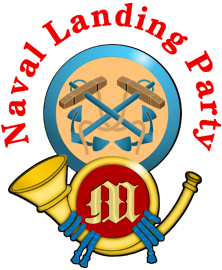In these Civil War sesquicentennial years, it is certain that, in 2013, the nation will be treated to significant observations of the epic Battle of Gettysburg. Acclaimed scholars will offer their versions of the three-day struggle, arm-chair historians will debate possibilities in endless "what if" scenarios, and there will undoubtedly be the most massive reenactment the world has ever seen that July, with tens of thousands of participants and hundreds of thousands of spectators. It will be an anniversary to remember—but not the one we all have been taught to believe was the turning point of the war.
The truly pivotal engagement of the American Civil War took place more than a year earlier, when Flag-Officer D. G. Farragut fought his way past the forts at the mouth of the Mississippi on the morning of 24 April and, a day later, captured New Orleans. In so doing, he denied the Confederacy the use of the port as a privateering and supply base and bottled up the river; captured the Leeds Iron Works, which, with the Tredegar Works in Richmond, were the only modern foundries in the South; eliminated Texas beef and Louisiana salt from the already-meager rebel diet; and sent a shock through the governments of Europe, of which the result of Gettysburg would be but a faint echo. The North—then, as now, focused on the titanic land battles of the east—failed to fully appreciate the significance of the Navy's single-handed exploit, but Southerners were under no such delusion. In Richmond, the diarist Mary Chesnut summed up the fear of her fellow countrymen when she wrote, "New Orleans is gone, and with it the Confederacy! Are we not cut in two? The Mississippi ruins us if it is lost!" Less than a year after the beginning of the war, the Navy had captured the largest and most important city in the South.
Farragut accomplished this feat with the loss of but three ships and less than two hundred casualties, with 800 lost on the Confederate side. These were numbers that could almost be overlooked on the scale to which people were accustomed by this point in the war—similar results could be expected in a clash of mere brigades. And, with combined losses of 48,000 at Gettysburg (about one-third of the combatants), it is no wonder that the later battle has held the attention of history.
Only weeks before its capture, a New Orleans newspaper unwittingly wrote the epitaph for the entire Southern war effort: "We have nothing to fear from a land invasion of the enemy if he is unsupported by his naval armaments. . . . the right arm of his power in this war is in his gunboats on our seacoast; and that our only assurance of saving the Mississippi from his grasp is to paralyze that arm upon its waters." Today, as 150 years ago, the significance of the Navy's contribution to Union victory is unrecognized, with that branch perceived as a feature, rather than a factor, in the war. Yet nothing could be further from the truth.
Chuck Veit
President, Navy & Marine LHA
References:
The truly pivotal engagement of the American Civil War took place more than a year earlier, when Flag-Officer D. G. Farragut fought his way past the forts at the mouth of the Mississippi on the morning of 24 April and, a day later, captured New Orleans. In so doing, he denied the Confederacy the use of the port as a privateering and supply base and bottled up the river; captured the Leeds Iron Works, which, with the Tredegar Works in Richmond, were the only modern foundries in the South; eliminated Texas beef and Louisiana salt from the already-meager rebel diet; and sent a shock through the governments of Europe, of which the result of Gettysburg would be but a faint echo. The North—then, as now, focused on the titanic land battles of the east—failed to fully appreciate the significance of the Navy's single-handed exploit, but Southerners were under no such delusion. In Richmond, the diarist Mary Chesnut summed up the fear of her fellow countrymen when she wrote, "New Orleans is gone, and with it the Confederacy! Are we not cut in two? The Mississippi ruins us if it is lost!" Less than a year after the beginning of the war, the Navy had captured the largest and most important city in the South.
Farragut accomplished this feat with the loss of but three ships and less than two hundred casualties, with 800 lost on the Confederate side. These were numbers that could almost be overlooked on the scale to which people were accustomed by this point in the war—similar results could be expected in a clash of mere brigades. And, with combined losses of 48,000 at Gettysburg (about one-third of the combatants), it is no wonder that the later battle has held the attention of history.
Only weeks before its capture, a New Orleans newspaper unwittingly wrote the epitaph for the entire Southern war effort: "We have nothing to fear from a land invasion of the enemy if he is unsupported by his naval armaments. . . . the right arm of his power in this war is in his gunboats on our seacoast; and that our only assurance of saving the Mississippi from his grasp is to paralyze that arm upon its waters." Today, as 150 years ago, the significance of the Navy's contribution to Union victory is unrecognized, with that branch perceived as a feature, rather than a factor, in the war. Yet nothing could be further from the truth.
Chuck Veit
President, Navy & Marine LHA
References:



Comment